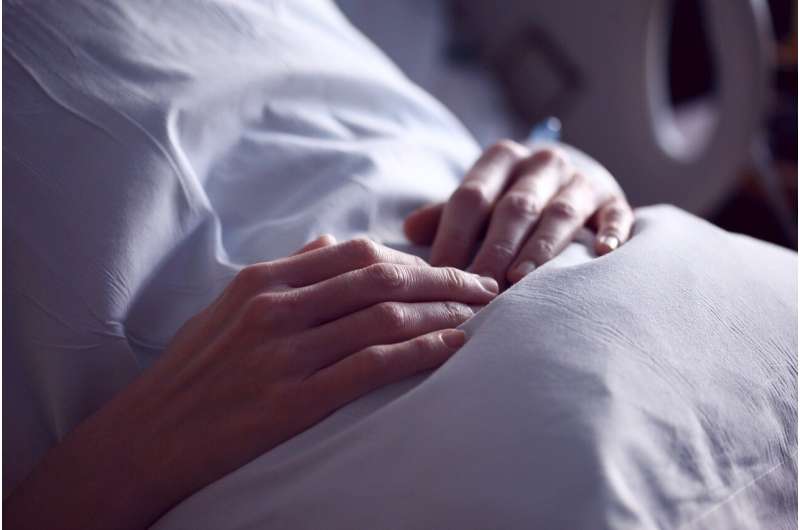Credit: CC0 Public Domain
According to recent research studies, patients hospitalized with COVID-19 are at high risk of developing venous thromboembolism (VTE), a potentially deadly condition in which a blood clot forms in the deep veins of the leg, groin or arm (known as a deep vein thrombosis, or DVT) and may dislodge. If that happens, the clot can travel via the bloodstream to lodge in the lungs and cause tissue damage or death from reduced oxygen (known as a pulmonary embolism, or PE). It has recently been thought that missed doses of anti-clotting drugs in patients with COVID-19 in hospital settings might contribute to increased rates of hospital-associated VTEs.
Now, a Johns Hopkins Medicine research team has provided evidence that the high hospital-associated VTE incident rate among patients with COVID-19 is not due to clot-preventing medications—primarily anticoagulants (commonly called "blood thinners")—being missed or not prescribed at all during treatment, as previously suspected. The findings were reported online Jan. 28, 2021, in the Journal of Thrombosis and Thrombolysis.
In their retrospective study, the researchers looked at medical records for all 5,790 adult patients discharged from The Johns Hopkins Hospital between March 1 and May 12, 2020—including those who tested positively (439) or negatively (2,316) for COVID-19, or weren't tested at all (3,035). They compared the three groups for demographics, clinical characteristics, VTE outcomes, and the prescription and administration of VTE-preventive medications.
"While nonadministration of VTE prophylaxis in hospitals is known to be common, it wasn't the case for the patients with COVID-19 that we studied," says Elliott Haut, M.D., Ph.D., associate professor of surgery at the Johns Hopkins University School of Medicine and senior author of the study. "In fact, patients with COVID-19 were more frequently administered all doses of the preventive medications prescribed for them."
Haut says that the team suspects this finding reflects enhanced vigilance and prioritization by physicians (for prescribing) and nurses (for administering), due to the evidence that patients with COVID-19 have a higher risk for VTEs.
"Awareness of the high VTE risk in patients with COVID-19 has resulted in better administration of pharmacologic prophylaxis for these patients," says Mujan Varasteh Kia, M.P.H., a research assistant at the Johns Hopkins University School of Medicine and study lead author.
Before the study, Haut says the research team hypothesized that decreased patient contact and limited supplies of personal protective equipment during the early stages of the COVID-19 pandemic might have hindered the administration of VTE prophylaxis in patients with the disease. Had the study shown that to be true, Haut explains, educating health care staff to avoid missing doses would have been a relatively simple solution.
"However, we actually learned from our study that doctors and nurses are probably doing a good job of trying to prevent VTEs in patients with COVID-19 through drug intervention," Haut says. "We believe therefore, that future research efforts should prioritize finding and implementing alternative approaches to optimizing VTE prevention in these patients."
More information: Mujan Varasteh Kia et al. Nonadministration of pharmacologic venous thromboembolism prophylaxis is less common in hospitalized patients with COVID-19, Journal of Thrombosis and Thrombolysis (2021). DOI: 10.1007/s11239-021-02384-9
Provided by Johns Hopkins University
























